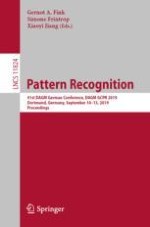2019 | Book
Pattern Recognition
41st DAGM German Conference, DAGM GCPR 2019, Dortmund, Germany, September 10–13, 2019, Proceedings
Editors: Gernot A. Fink, Dr. Simone Frintrop, Prof. Xiaoyi Jiang
Publisher: Springer International Publishing
Book Series : Lecture Notes in Computer Science
